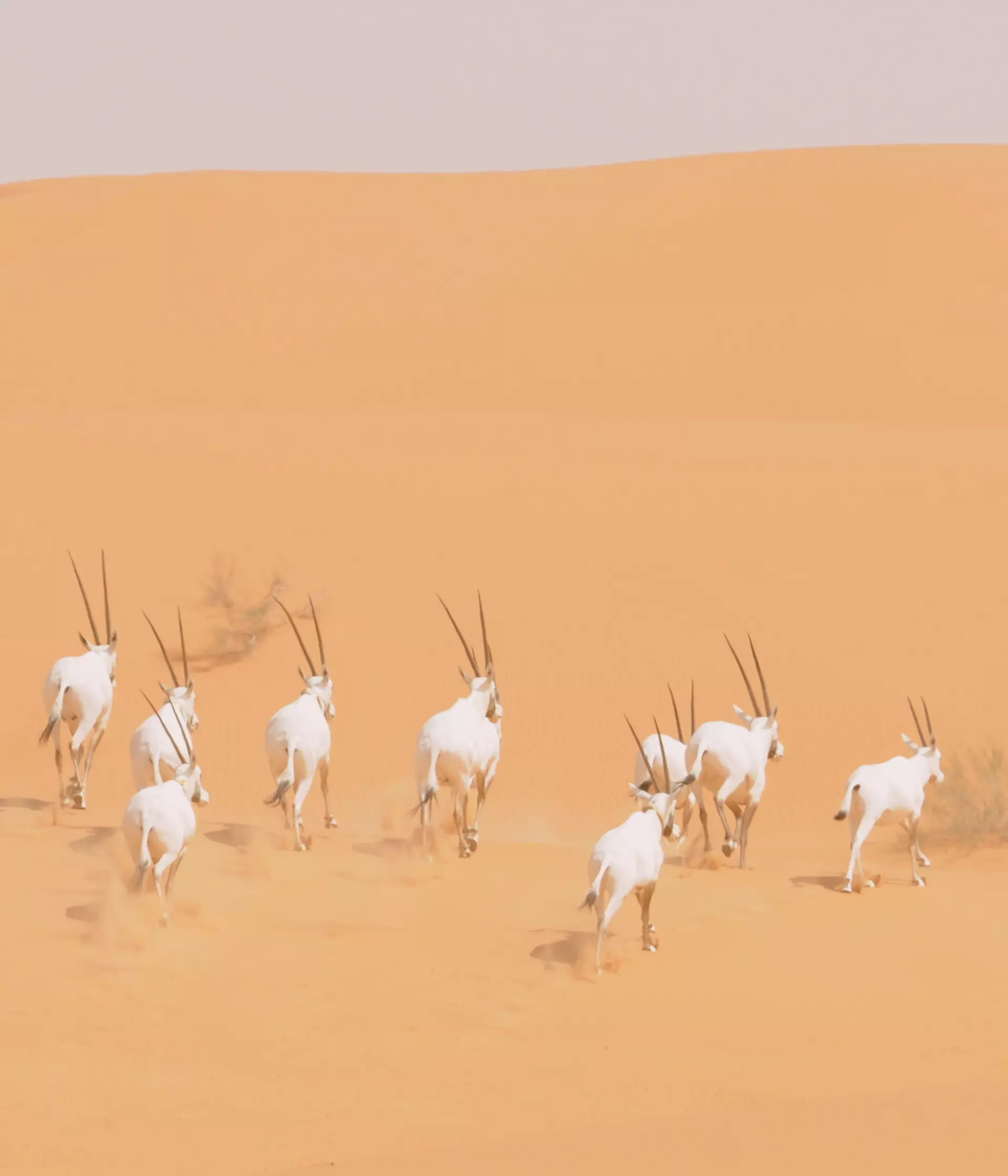King Khalid Wildlife Research Centre (KKWRC) is one of the largest gazelle breeding centres in the world. We managed KKWRC for the Saudi Wildlife Authority from 1987 until 2016, making it our oldest field-based conservation project. We worked directly with The Saudi Wildlife Authority and have enjoyed 28 years of support and success within the Kingdom.
The Living Collection (our breeding population of gazelles) acted as a genetic reservoir for a number of highly threatened species, and as a source to supplement wild populations. We ran a number of long-term monitoring programmes within Protected Areas, as well as active research into mammal biodiversity, using the latest remote camera technology.
The KKWRC laboratory carries out a range of screening and disease diagnosis, and houses one of the most important collections of biological samples in the Arabian Peninsula.
We provided the Saudi Wildlife Authority with expertise in the captive management of threatened species, and provided conservation support, training and assistance in monitoring the extensive Protected Area network within Saudi Arabia.
Early involvement focused on the conservation breeding, reintroduction and post-release monitoring of animals into a range of Protected Areas. Since the successful reintroductions, we focused on providing applied conservation support through training Protected Area Managers and field rangers in survey techniques, providing management advice and regular supplementary reintroductions.
Establishing wildlife conservation in Saudi Arabia
We have been involved in various projects over the years including:
- Long-term captive management and breeding of four key threatened species (Arabian and Sand Gazelles, Nubian Ibex and Arabian Oryx)
- Successful reintroduction and monitoring of Arabian and Sand Gazelles into the Empty Quarter, a vast area of desert in the southern Arabian Peninsula
- Successful reintroduction of Arabian Gazelles into the Ibex Reserve Protected Area
- Long term monitoring of Nubian Ibex and Arabian Gazelle populations in the Ibex Reserve Protected Area
- A camera trap survey within the Ibex Reserve Protected Area to assess the diversity of small and medium-sized mammals
- National genetic survey of the Arabian Wolf (Canis lupus arabs)
- Contributing to the understanding of the complex area of gazelle genetics
- Periodic censuses of gazelle populations in protected areas such as The Farasan Islands, The Ibex Reserve, Uruq Bani Ma’arid and Harrat al Harrah
- Collection and archiving of more than 75,000 biological samples from a range of Saudi Arabian wildlife.
We achieved the return of the iconic scimitar-horned oryx to its homelands on the edge of the Sahara desert after the recent successful release of 14 captive-bred animals to a remote region of Chad.
This is only the second group to return to the wild after the species was classified as Extinct in the Wild by the IUCN in 2000.
Celebrating conservation in Saudi Arabia
After 28 years, we have handed back the reins at the King Khalid Wildlife Research Centre (KKWRC) to the Saudi Wildlife Authority, which will oversee future management of the centre.
The Centre has delivered some tremendous results over the years, including reintroducing two species of gazelle to the Uruq Bani M'Arid protected area; a region from which they had disappeared. Over the years, ZSL have been working on cutting edge research and conservation at the Centre and we have been responsible for the only successful reintroductions of wild antelopes anywhere in the world.
We have built a firm foundation to restore and safeguard wildlife in the country for years to come.
